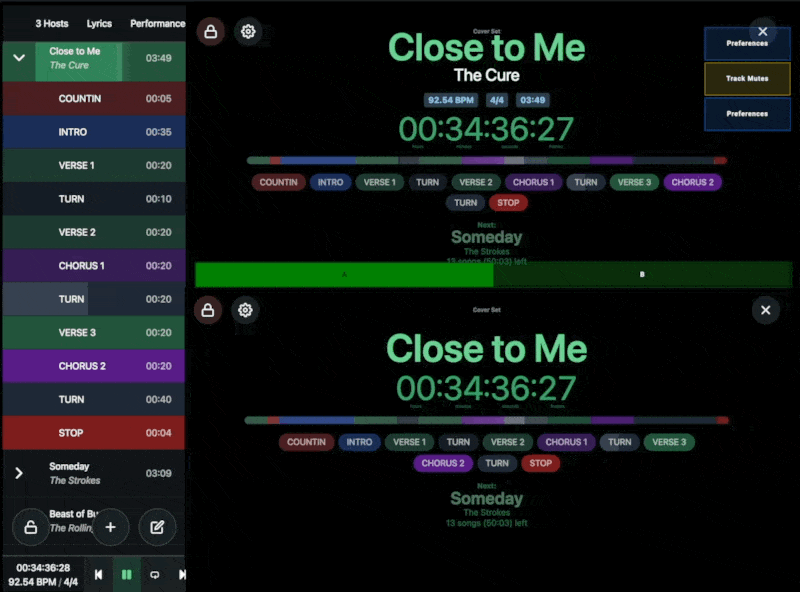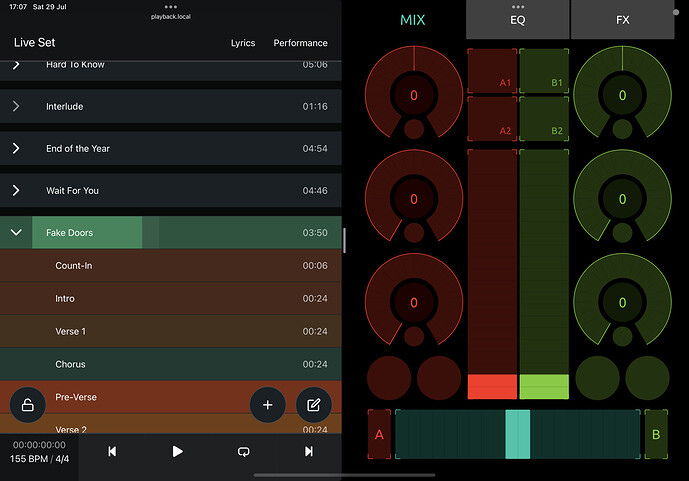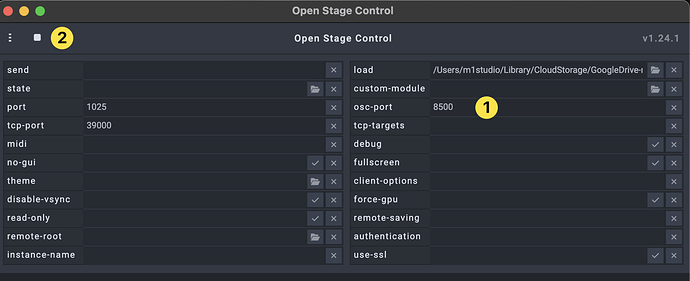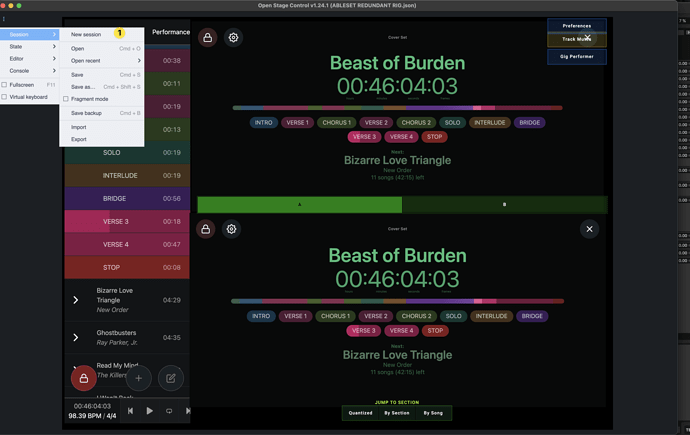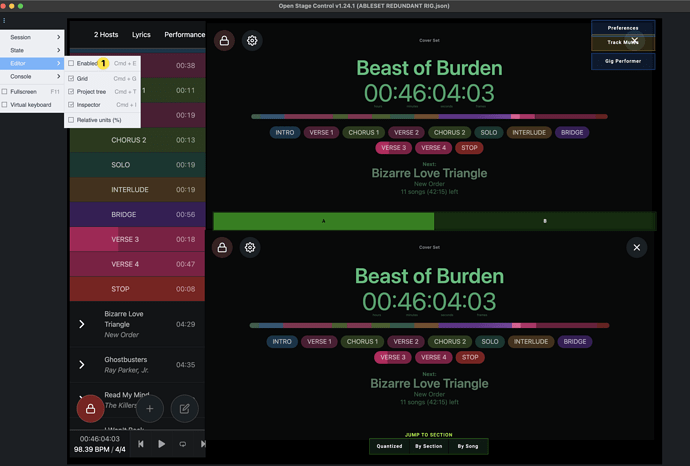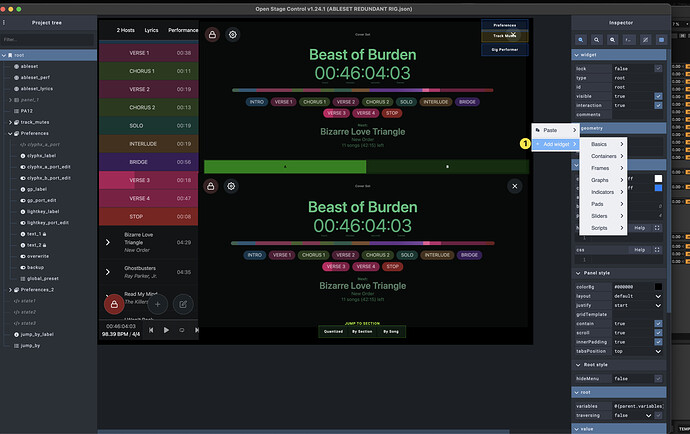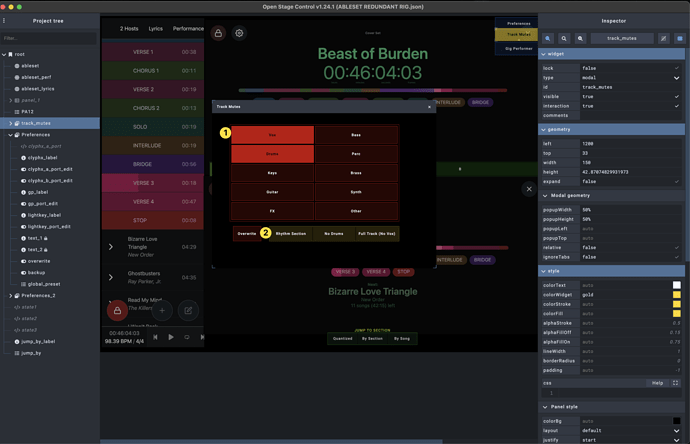@agustinvolpe @leolabs , here goes nothing…
The first step for this workflow is to download Open Stage Control (http://openstagecontrol.ammd.net). It’s free, and it runs another standalone web server on your computer. I have encountered no difficulty running Open Stage Control and Ableset side by side.
I’ll try to outline further steps below:
- Open the server application and set an OSC port to communicate with Open Stage. I have chosen 8500. You can start the server by pressing the play button in the upper left hand corner, and you can stop it by pressing the stop button.
2. You can create a New Session by using the cascading menu in the upper left hand corner.
3. The Editor is accessed by using Command-E or, again, the menu.
4. Widgets can be added with a right-click. All the usual suspects are here if you’ve used TouchOSC or something similar. Buttons, faders, knobs, matrices, all of which can be interacted with through MIDI or OSC (or even local scripting). The community at Open Stage Control is helpful to gain a better understanding. In our case, the desired widget to display Ableset windows is a
frame. Add as many as you like and scale them accordingly.
5. Use the
value property in the inspector to assign the appropriate URL for your Ableset window. You can even create buttons or widgets that change this url dynamically like a web browser. In my case, I chose to have three frames visible. The far left points to the setlist view on machine A. The upper central frame points to performance view on Machine A. The lower central frame points to the performance view of Machine B.
6. In my personal setup, I am using stems for all tracks in Ableton, grouped into instrument sections. By using Clyphx Pro and X-OSC triggers, I can send OSC messages from this matrix to mute and unmute various instrument groups on the fly. You can even use Open Stage Control to save “snapshots” of the mute states, as seen below the matrix.
7. Another thing I like to do is have text fields that store the OSC port numbers for the various programs and hardware I like to communicate with. This way I don’t have to hardcode it into any OSC messages being sent from Open Stage Control. You can save “States” of your session file and even choose a default state to be loaded when you start the server (this can be done on the server setup window.)
With a lot of great OSC commands afforded by Leo, I can create custom buttons and toggles on the Open Stage Control grid to execute actions such as changing the Jump Mode etc. etc. By no means am I an expert in Open Stage Control, but I do know you can perform a lot of custom scripting on Widgets via java script (not my strong suit) in order to suit your needs. Really, the sky is the limit in terms of interoperability with Ableset.
